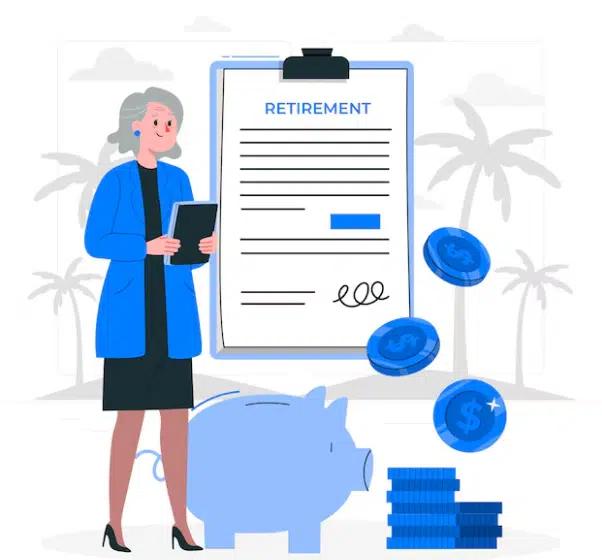Embarking on the path to early retirement is a journey filled with anticipation, but also clouded by misconceptions. Many envision a life of leisure and financial freedom, yet the road to achieving this dream demands careful financial planning and clarity. In the USA, conversations around early retirement abound with myths and realities that must be navigated. Understanding these intricacies is crucial for anyone aspiring to retire early and live comfortably.
Whether you’re in the early stages of your career or approaching the desired timeline for retirement, knowing the truths about financial preparation is essential in turning this ambition into a viable plan. A key element in debunking misconceptions about early retirement is recognizing that it’s not solely about amassing a significant amount of wealth, but also about cultivating a sustainable lifestyle that aligns with your long-term goals.
Financial independence requires meticulous budgeting, disciplined saving, and strategic investments, such as leveraging tax-advantaged accounts like 401(k)s and IRAs or exploring passive income streams through real estate and dividend-paying stocks. Additionally, understanding the nuances of healthcare costs, inflation, and potential market volatility is vital to ensuring your savings outpace expenses over the years. Early retirement is less about achieving a fixed number and more about developing a resilient financial framework that can adapt to life’s uncertainties.
Debunking myths of early retirement
One common misconception about early retirement is the notion that it’s only possible for those with extremely high incomes. While having a substantial salary can certainly provide an advantage, it’s not an exclusive requirement. The key lies more in disciplined saving and prioritizing investments rather than merely relying on income. Creating a substantial nest egg involves consistent contributions to retirement accounts such as 401(k)s or IRAs, as well as thoughtful budgeting that values saving over spending. Moreover, living below one’s means and avoiding lifestyle inflation can significantly contribute to one’s ability to retire early.
Another prevalent myth is the belief that early retirement means completely stopping all work. For many, early retirement doesn’t equate to a traditional view of leisure, but rather a transition to pursuing hobbies, part-time jobs, or entrepreneurial ventures that they are passionate about. The concept of “Financial Independence, Retire Early” (FIRE) challenges the understanding of retirement, placing emphasis on achieving financial independence to make career and lifestyle choices driven by desire instead of necessity. Thus, redefining retirement not as an end, but a new beginning full of opportunities.
Understanding the reality of expenses
Despite myths, the reality of planning for early retirement involves a detailed understanding of potential expenses. It’s crucial to evaluate the current cost of living and predict future financial needs. Consideration of medical expenses, which tend to increase with age, is paramount. Health insurance considerations, like long-term care insurance, Medicare eligibility, and potential changes in healthcare policies, can substantially impact retirement savings. The Affordable Care Act and its subsidies provide early retirees with healthcare options, but costs can be unpredictable.
Housing is another major expense to account for. Deciding whether to pay off your mortgage before retiring can greatly influence financial stability. Some retirees choose to downsize or relocate to areas with a lower cost of living, impacting overall expenses significantly. The financial implications of lifelong housing choices, whether owning or renting, should be a core part of any early retirement plan. Evaluating these scenarios helps planners manage housing costs effectively without compromising their lifestyle.
Creating a sustainable income stream
While many think of savings accumulation as the cornerstone of retirement planning, few consider the importance of establishing sustainable income streams. Diversifying income sources can provide a reliable cushion even after stopping full-time employment. Investments in dividend-paying stocks, bonds, or real estate can offer adaptable and regular income. Ensuring a mix of incomes such as annuities or social security maximizes financial security by spreading risks across various revenue sources.
For those fondly titled “semi-retirees,” engaging in part-time work or side hustles can offer a direct income supplement. This approach caters not only to financial stability but also maintains involvement in tasks that add creativity and purpose to daily life, making early retirement more fulfilling. Merging passion with work mitigates financial constraints while nurturing personal satisfaction.
Mapping out strategies for success
Building a concrete strategy is imperative to successfully navigate early retirement. A vital strategy involves starting to save as soon as possible and making it a habit. The power of compound interest cannot be overstated here. Beginning contributions to retirement accounts at an early age will compound investment returns exponentially, creating a more substantial fund over time. The earlier the initiation, the greater the eventual financial growth.
Additionally, regular reviews and adjustments to one’s financial plan ensure alignment with evolving life goals and market conditions. Consistent evaluations and course corrections, such as reallocating investments or altering savings strategies, enable adaptability in the face of unforeseen circumstances. This dynamism ensures that financial goals remain achievable despite changing economic landscapes or personal life events.





